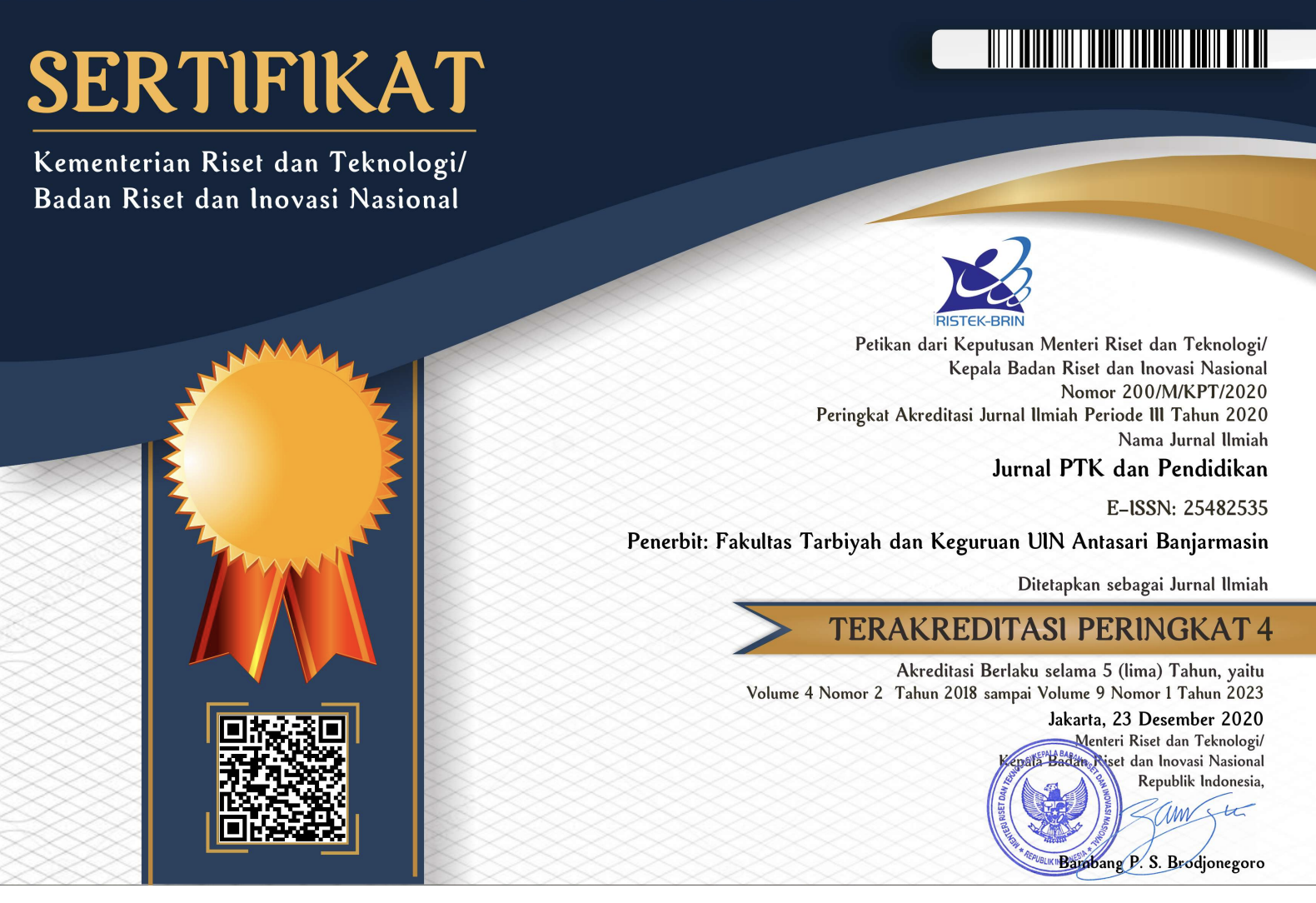ANALYSIS OF STUDENT DIFFICULTIES IN IPAS LEARNING AND PRACTICUM AT SDN 001 TANJUNGPINANG TIMUR
DOI:
https://doi.org/10.18592/ptk.v10i2.12112Keywords:
Student Learning Design, Practicum Guide, Teaching Skills, Learning ModulesAbstract
Making science lesson plans in elementary school and practicum guides are needed to plan systematic learning in accordance with the material being taught so that learning objectives can be achieved and learning can be understood by students. In addition, to facilitate the delivery of a series of materials This research uses descriptive qualitative research with the subject, namely the V C class teacher of SD Negeri 001 Tanjungpinang Timur, the research was conducted using interview data collection techniques which were carried out on November 21, 2023. The interview process was assisted by question instruments, stationery and audio and visual recording devices. This research is intended and intended so that we can find out what problems are behind student understanding, the difficulty of making lesson plans and also the difficulty of determining appropriate media and practicum modules that can be easily understood, especially at SD Negeri 001 Tanjungpinang Timur.References
Arsyad. (2021). Menyusun Rencana Pelaksanaan Pembelajaran Melalui BimbinganBerkelanjutan Untuk Meningkatkan Kompetensi GuruSD Inpres 10/73 Welado Kabupaten Bone. Jurnal Pendidikan & Pembelajaran Sekolah Dasar, 1(2), 2021. https://ojs.unm.ac.id/jppsd/index
Dewi, T. M. (2019). Pengembangan Buku Penuntun Praktikum Ipa Sd Berbasis Keterampilan Proses Sains Pada Mata Kuliah Praktikum Ipa Sd Untuk Mahasiswa Pendidikan Guru Sekolah Dasar (Pgsd). Simbiosa, 8(1), 28. https://doi.org/10.33373/sim-bio.v8i1.1803
Gusdiyanto, H., & Setya Mustafa, P. (2022). Evaluasi Rancangan Pembelajaran Pendidikan Jasmani Dan Kesehatan Di Sekolah Dasar Negeri Bunulrejo 1 Kota Malang. Jurnal Lentera Pendidikan Pusat Penelitian Lppm Um Metro, 7(1), 115. https://doi.org/10.24127/jlpp.v7i1.2116
Gustiansyah, K., Sholihah, N. M., & Sobri, W. (2021). Pentingnya Penyusunan RPP untuk Meningkatkan Keaktifan Siswa dalam Belajar Mengajar di Kelas. Idarotuna : Journal of Administrative Science, 1(2), 81–94. https://doi.org/10.54471/idarotuna.v1i2.10
Hasruddin, H., & Rezeqi, S. (2012). Analisis Pelaksanaan praktikum biologi dan permasalahannya di SMA Negeri Sekabupaten Karo. Jurnal Tabularasa PPS Unimed, 9(1), 17–32.
Mahmudah, T. (2020). Penyusunan Rencana Pelaksanaan Pembelajaran (RPP) Guru Bahasa Indonesia di SMP Negeri 2 Bantul. Universitas Negeri Yogyakarta, 1–23.
Mulyana, D. (2008). Metodologi Penelitian Kualitatif. PT Remaja Rosda Karya.
Mulyasa, E. (2007). Kurikulum Tingkat Satuan Pendidikan. PT.Remaja Rosdakarya.
Usmeldi, & Amini, R. (2021). Pelatihan Penggunaan KIT IPA dan Pengembangan LKPD Berbasis Praktikum untuk Guru IPA. Jurnal Abdimas Prakasa Dakara, 1(2), 56–65. https://doi.org/10.37640/japd.v1i2.1010
Wahyuni, S., & Ibrahim, S. A. (2012). Perencanaan Pembelajaran Bahasa Berkarakter. Refika Aditama.
Downloads
Published
How to Cite
Issue
Section
License
Copyright (c) 2025 Nabila Andini

This work is licensed under a Creative Commons Attribution 4.0 International License.
- The right to publication of all journal material published on the Jurnal PTK dan Pendidikan website is held by the editorial board with the author's knowledge (moral rights remain the property of the author).
- The formal legal provisions for access to digital articles of this electronic journal are subject to the terms of the Creative Commons CC BY 4.0 DEED Attribution International (CC BY) license. This license enables reusers to distribute, remix, adapt, and build upon the material in any medium or format, so long as attribution is given to the creator. The license allows for commercial use.
- Printed and electronic published manuscripts are open access for educational, research and library purposes. In addition to these objectives, the editorial board shall not be liable for violations of copyright law.






